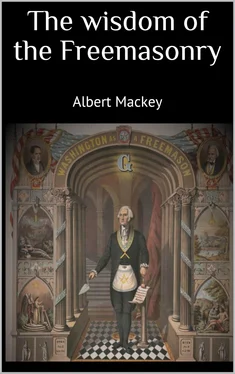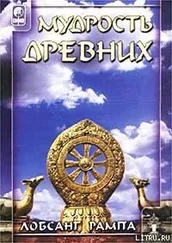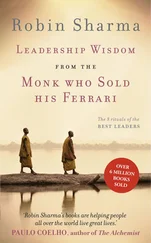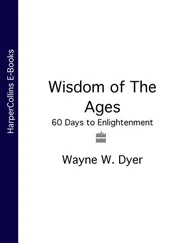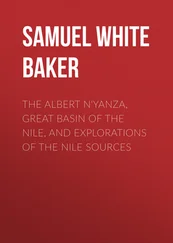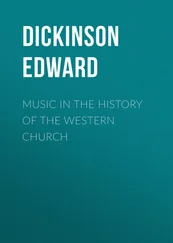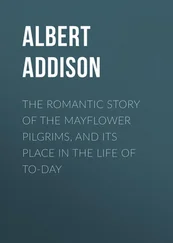Albert Mackey - The wisdom of the Freemasonry
Здесь есть возможность читать онлайн «Albert Mackey - The wisdom of the Freemasonry» — ознакомительный отрывок электронной книги совершенно бесплатно, а после прочтения отрывка купить полную версию. В некоторых случаях можно слушать аудио, скачать через торрент в формате fb2 и присутствует краткое содержание. Жанр: unrecognised, на английском языке. Описание произведения, (предисловие) а так же отзывы посетителей доступны на портале библиотеки ЛибКат.
- Название:The wisdom of the Freemasonry
- Автор:
- Жанр:
- Год:неизвестен
- ISBN:нет данных
- Рейтинг книги:4 / 5. Голосов: 1
-
Избранное:Добавить в избранное
- Отзывы:
-
Ваша оценка:
- 80
- 1
- 2
- 3
- 4
- 5
The wisdom of the Freemasonry: краткое содержание, описание и аннотация
Предлагаем к чтению аннотацию, описание, краткое содержание или предисловие (зависит от того, что написал сам автор книги «The wisdom of the Freemasonry»). Если вы не нашли необходимую информацию о книге — напишите в комментариях, мы постараемся отыскать её.
The wisdom of the Freemasonry — читать онлайн ознакомительный отрывок
Ниже представлен текст книги, разбитый по страницам. Система сохранения места последней прочитанной страницы, позволяет с удобством читать онлайн бесплатно книгу «The wisdom of the Freemasonry», без необходимости каждый раз заново искать на чём Вы остановились. Поставьте закладку, и сможете в любой момент перейти на страницу, на которой закончили чтение.
Интервал:
Закладка:
IX. Disseverance of the Operative Element.
The next point to which our attention is to be directed is when, a few centuries later, the operative character of the institution began to be less prominent, and the speculative to assume a pre-eminence which eventually ended in the total separation of the two.
At what precise period the speculative began to predominate over the operative element of the society, it is impossible to say. The change was undoubtedly gradual, and is to be attributed, in all probability, to the increased number of literary and scientific men who were admitted into the ranks of the fraternity. The Charter of Cologne, to which I have just alluded, speaks of "learned and enlightened men" as constituting the society long before the date of that document, which was 1535; but the authenticity of this work has, it must be confessed, been impugned, and I will not, therefore, press the argument on its doubtful authority. But the diary of that celebrated antiquary, Elias Ashmole, which is admitted to be authentic, describes his admission in the year 1646 into the order, when there is no doubt that the operative character was fast giving way to the speculative. Preston tells us that about thirty years before, when the Earl of Pembroke assumed the Grand Mastership of England, "many eminent, wealthy, and learned men were admitted." In the year 1663 an assembly of the Freemasons of England was held at London, and the Earl of St. Albans was elected Grand Master. At this assembly certain regulations were adopted, in which the qualifications prescribed for candidates clearly allude to the speculative character of the institution. And, finally, at the commencement of the eighteenth century, and during the reign of Queen Anne, who died, it will be remembered, in 1714, a proposition was agreed to by the society "that the privileges of Masonry should no longer be restricted to operative masons, but extend to men of various professions, provided that they were regularly approved and initiated into the order." Accordingly the records of the society show that from the year 1717, at least, the era commonly, but improperly, distinguished as the restoration of Masonry, the operative element of the institution has been completely discarded, except so far as its influence is exhibited in the choice and arrangement of symbols, and the typical use of its technical language.
The history of the origin of the order is here concluded; and in briefly recapitulating, I may say that in its first inception, from the time of Noah to the building of the temple of Solomon, it was entirely speculative in its character; that at the construction of that edifice, an operative element was infused into it by the Tyrian builders; that it continued to retain this compound operative and speculative organization until about the middle of the seventeenth century, when the latter element began to predominate; and finally, that at the commencement of the eighteenth century, the operative element wholly disappeared, and the society has ever since presented itself in the character of a simply speculative association. The history that I have thus briefly sketched, will elicit from every reflecting mind at least two deductions of some importance to the intelligent Mason. In the first place, we may observe, that ascending, as the institution does, away up the stream of time, almost to the very fountains of history, for its source, it comes down to us, at this day, with so venerable an appearance of antiquity, that for that cause and on that claim alone it demands the respect of the world. It is no recent invention of human genius, whose vitality has yet to be tested by the wear and tear of time and opposition, and no sudden growth of short-lived enthusiasm, whose existence may be as ephemeral as its birth was recent. One of the oldest of these modern institutions, the Carbonarism of Italy, boasts an age that scarcely amounts to the half of a century, and has not been able to extend its progress beyond the countries of Southern Europe, immediately adjacent to the place of its birth; while it and every other society of our own times that have sought to simulate the outward appearance of Freemasonry, seem to him who has examined the history of this ancient institution to have sprung around it, like mushrooms bursting from between the roots and vegetating under the shade of some mighty and venerable oak, the patriarch of the forest, whose huge trunk and wide-extended branches have protected them from the sun and the gale, and whose fruit, thrown off in autumn, has enriched and fattened the soil that gives these humbler plants their power of life and growth. But there is a more important deduction to be drawn from this narrative. In tracing the progress of Freemasonry, we shall find it so intimately connected with the history of philosophy, of religion, and of art in all ages of the world, that it is evident that no Mason can expect thoroughly to understand the nature of the institution, or to appreciate its character, unless he shall carefully study its annals, and make himself conversant with the facts of history, to which and from which it gives and receives a mutual influence. The brother who unfortunately supposes that the only requisites of a skilful Mason consist in repeating with fluency the ordinary lectures, or in correctly opening and closing the lodge, or in giving with sufficient accuracy the modes of recognition, will hardly credit the assertion, that he whose knowledge of the "royal art" extends no farther than these preliminaries has scarcely advanced beyond the rudiments of our science. There is a far nobler series of doctrines with which Freemasonry is connected, and which no student ever began to investigate who did not find himself insensibly led on, from step to step in his researches, his love and admiration of the order increasing with the augmentation of his acquaintance with its character. It is this which constitutes the science and the philosophy of Freemasonry, and it is this alone which will return the scholar who devotes himself to the task a sevenfold reward for his labor. With this view I propose, in the next place, to enter upon an examination of that science and philosophy as they are developed in the system of symbolism, which owes its existence to this peculiar origin and organization of the order, and without a knowledge of which, such as I have attempted to portray it in this preliminary inquiry, the science itself could never be understood.
X. The System of Symbolic Instuction.
The lectures of the English lodges, which are far more philosophical than our own,--although I do not believe that the system itself is in general as philosophically studied by our English brethren as by ourselves,--have beautifully defined Freemasonry to be "a science of morality veiled in allegory and illustrated by symbols." But allegory itself is nothing else but verbal symbolism; it is the symbol of an idea, or of a series of ideas, not presented to the mind in an objective and visible form, but clothed in language, and exhibited in the form of a narrative. And therefore the English definition amounts, in fact, to this: that Freemasonry is a science of morality, developed and inculcated by the ancient method of symbolism. It is this peculiar character as a symbolic institution, this entire adoption of the method of instruction by symbolism, which gives its whole identity to Freemasonry, and has caused it to differ from every other association that the ingenuity of man has devised. It is this that has bestowed upon it that attractive form which has always secured the attachment of its disciples and its own perpetuity.
The Roman Catholic church 37 is, perhaps, the only contemporaneous institution which continues to cultivate, in any degree, the beautiful system of symbolism. But that which, in the Catholic church, is, in a great measure, incidental, and the fruit of development, is, in Freemasonry, the very life-blood and soul of the institution, born with it at its birth, or, rather, the germ from which the tree has sprung, and still giving it support, nourishment, and even existence. Withdraw from Freemasonry its symbolism, and you take from the body its soul, leaving behind nothing but a lifeless mass of effete matter, fitted only for a rapid decay. Since, then, the science of symbolism forms so important a part of the system of Freemasonry, it will be well to commence any discussion of that subject by an investigation of the nature of symbols in general. There is no science so ancient as that of symbolism, 38 and no mode of instruction has ever been so general as was the symbolic in former ages. "The first learning in the world," says the great antiquary, Dr. Stukely, "consisted chiefly of symbols. The wisdom of the Chaldeans, Phoenicians, Egyptians, Jews, of Zoroaster, Sanchoniathon, Pherecydes, Syrus, Pythagoras, Socrates, Plato, of all the ancients that is come to our hand, is symbolic." And the learned Faber remarks, that "allegory and personification were peculiarly agreeable to the genius of antiquity, and the simplicity of truth was continually sacrificed at the shrine of poetical decoration." In fact, man's earliest instruction was by symbols. 39 The objective character of a symbol is best calculated to be grasped by the infant mind, whether the infancy of that mind be considered nationally orindividually. And hence, in the first ages of the world, in its infancy, all propositions, theological, political, or scientific, were expressed in the form of symbols. Thus the first religions were eminently symbolical, because, as that great philosophical historian, Grote, has remarked, "At a time when language was yet in its infancy, visible symbols were the most vivid means of acting upon the minds of ignorant hearers." Again: children receive their elementary teaching in symbols. "A was an Archer;" what is this but symbolism? The archer becomes to the infant mind the symbol of the letter A, just as, in after life, the letter becomes, to the more advanced mind, the symbol of a certain sound of the human voice. 40 The first lesson received by a child in acquiring his alphabet is thus conveyed by symbolism. Even in the very formation of language, the medium of communication between man and man, and which must hence have been an elementary step in the progress of human improvement, it was found necessary to have recourse to symbols, for words are only and truly certain arbitrary symbols by which and through which we give an utterance to our ideas. The construction of language was, therefore, one of the first products of the science of symbolism. We must constantly bear in mind this fact, of the primary existence and predominance of symbolism in the earliest times. 41 when we are investigating the nature of the ancient religions, with which the history of Freemasonry is so intimately connected. The older the religion, the more the symbolism abounds. Modern religions may convey their dogmas in abstract propositions; ancient religions always conveyed them in symbols. Thus there is more symbolism in the Egyptian religion than in the Jewish, more in the Jewish than in the Christian, more in the Christian than in the Mohammedan, and, lastly, more in the Roman than in the Protestant. But symbolism is not only the most ancient and general, but it is also the most practically useful, of sciences. We have already seen how actively it operates in the early stages of life and of society. We have seen how the first ideas of men and of nations are impressed upon their minds by means of symbols. It was thus that the ancient peoples were almost wholly educated. "In the simpler stages of society," says one writer on this subject, "mankind can be instructed in the abstract knowledge of truths only by symbols and parables. Hence we find most heathen religions becoming mythic, or explaining their mysteries by allegories, or instructive incidents. Nay, God himself, knowing the nature of the creatures formed by him, has condescended, in the earlier revelations that he made of himself, to teach by symbols; and the greatest of all teachers instructed the multitudes by parables. 42 The great exemplar of the ancient philosophy and the grand archetype of modern philosophy were alike distinguished by their possessing this faculty in a high degree, and have told us that man was best instructed by similitudes." 43 Such is the system adopted in Freemasonry for the development and inculcation of the great religious and philosophical truths, of which it was, for so many years, the sole conservator. And it is for this reason that I have already remarked, that any inquiry into the symbolic character of Freemasonry, must be preceded by an investigation of the nature of symbolism in general, if we would properly appreciate its particular use in the organization of the masonic institution.
Читать дальшеИнтервал:
Закладка:
Похожие книги на «The wisdom of the Freemasonry»
Представляем Вашему вниманию похожие книги на «The wisdom of the Freemasonry» списком для выбора. Мы отобрали схожую по названию и смыслу литературу в надежде предоставить читателям больше вариантов отыскать новые, интересные, ещё непрочитанные произведения.
Обсуждение, отзывы о книге «The wisdom of the Freemasonry» и просто собственные мнения читателей. Оставьте ваши комментарии, напишите, что Вы думаете о произведении, его смысле или главных героях. Укажите что конкретно понравилось, а что нет, и почему Вы так считаете.
